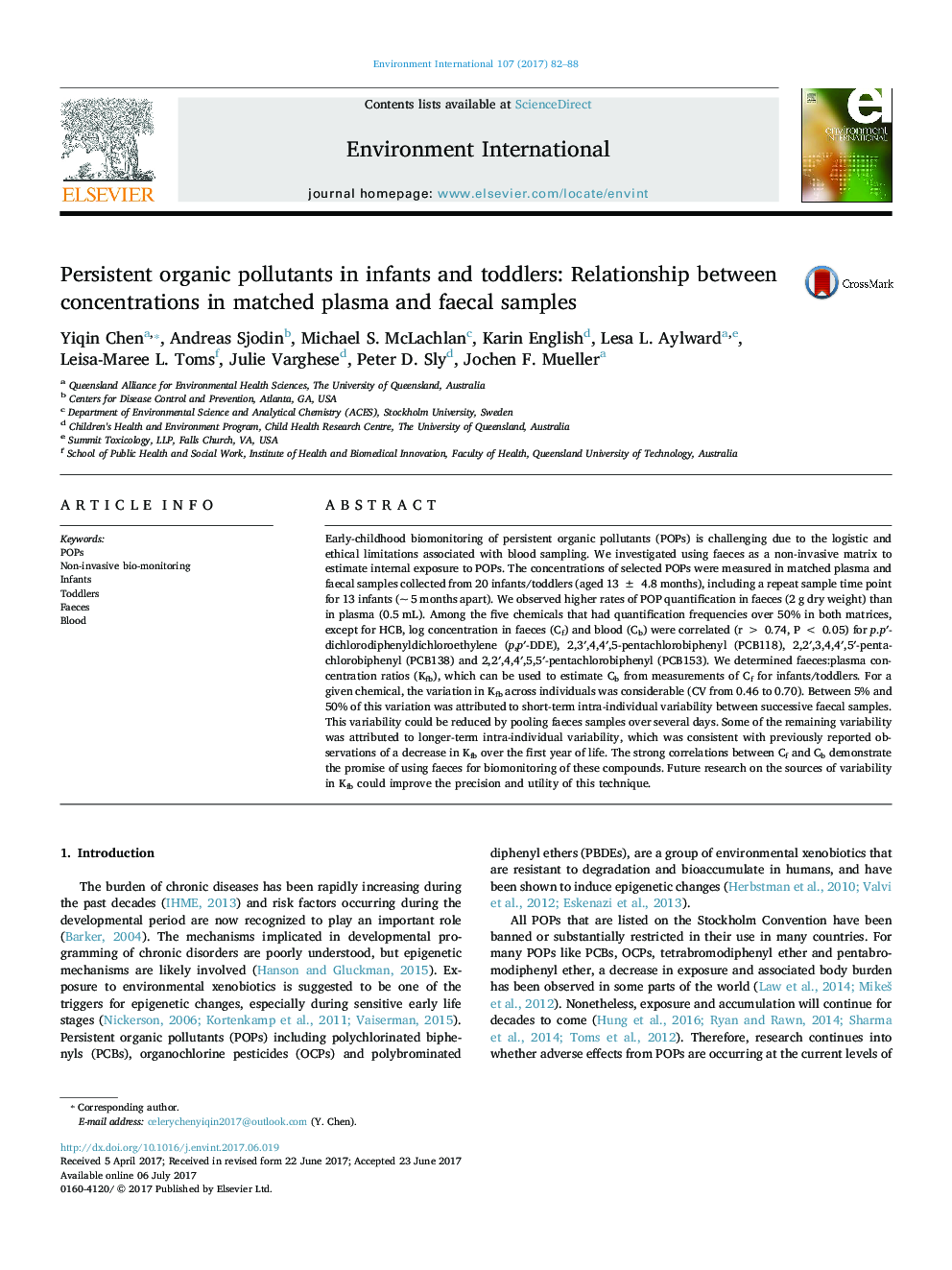| کد مقاله | کد نشریه | سال انتشار | مقاله انگلیسی | نسخه تمام متن |
|---|---|---|---|---|
| 5748307 | 1619023 | 2017 | 7 صفحه PDF | دانلود رایگان |
- Concentrations of DDE and three PCBs in faeces and in plasma are highly correlated.
- The faeces:blood concentration ratio (Kfb) is a concentration independent ratio.
- Kfb varies considerably both intra- and inter-individually.
Early-childhood biomonitoring of persistent organic pollutants (POPs) is challenging due to the logistic and ethical limitations associated with blood sampling. We investigated using faeces as a non-invasive matrix to estimate internal exposure to POPs. The concentrations of selected POPs were measured in matched plasma and faecal samples collected from 20 infants/toddlers (aged 13 ± 4.8 months), including a repeat sample time point for 13 infants (~ 5 months apart). We observed higher rates of POP quantification in faeces (2 g dry weight) than in plasma (0.5 mL). Among the five chemicals that had quantification frequencies over 50% in both matrices, except for HCB, log concentration in faeces (Cf) and blood (Cb) were correlated (r > 0.74, P < 0.05) for p.pâ²-dichlorodiphenyldichloroethylene (p,pâ²-DDE), 2,3â²,4,4â²,5-pentachlorobiphenyl (PCB118), 2,2â²,3,4,4â²,5â²-pentachlorobiphenyl (PCB138) and 2,2â²,4,4â²,5,5â²-pentachlorobiphenyl (PCB153). We determined faeces:plasma concentration ratios (Kfb), which can be used to estimate Cb from measurements of Cf for infants/toddlers. For a given chemical, the variation in Kfb across individuals was considerable (CV from 0.46 to 0.70). Between 5% and 50% of this variation was attributed to short-term intra-individual variability between successive faecal samples. This variability could be reduced by pooling faeces samples over several days. Some of the remaining variability was attributed to longer-term intra-individual variability, which was consistent with previously reported observations of a decrease in Kfb over the first year of life. The strong correlations between Cf and Cb demonstrate the promise of using faeces for biomonitoring of these compounds. Future research on the sources of variability in Kfb could improve the precision and utility of this technique.
Journal: Environment International - Volume 107, October 2017, Pages 82-88
